OnePlus 3 vs Galaxy S7: Which is best?
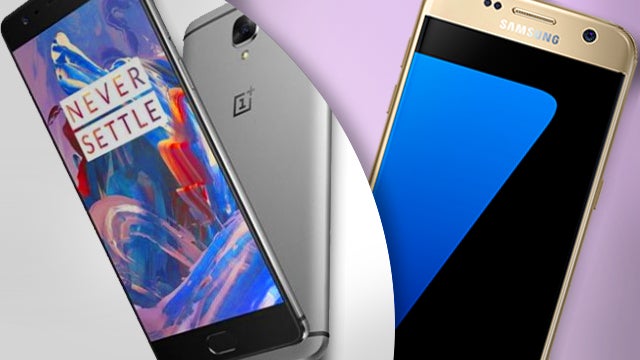
OnePlus 3 vs Galaxy S7: a look at whether the new “flagship killer” from OnePlus can dispatch Samsung’s mighty Galaxy S7.
Following months of anticipation, the OnePlus 3 has finally arrived. Here to give the flagship handsets a run for their money, by packing high-end hardware into an affordable smartphone, the third-generation OnePlus is an attractive offering from the Chinese firm.
However, 2016 has seen the launch of some seriously impressive phones, and perhaps chief among them is the Samsung Galaxy S7. It’s arguably the phone to beat this year, with a range of impressive specs complimented by refined design.
As such, we thought we’d take the opportunity to test OnePlus’ “flagship killer” claims by pitting it against the Samsung Galaxy S7 in a good old Trusted face-off.
We’re yet to get our hands on a OnePlus 3, but here’s an early look at how the two stack up in terms of specs.
Watch: What’s new in the OnePlus 3?
OnePlus 3 vs Galaxy S7 – Design
OnePlus has chosen to keep things simple with its latest handset. From the front, the phone looks almost identical to the OnePlus 2, sporting a black finish, rounded home button housing a fingerprint scanner, and front-facing camera on the upper part of the bezel.
It’s much the same story with the Galaxy S7. Samsung’s flagship features a similar home button/fingerprint scanner with capacitive buttons on either side, and a front-facing camera up top.
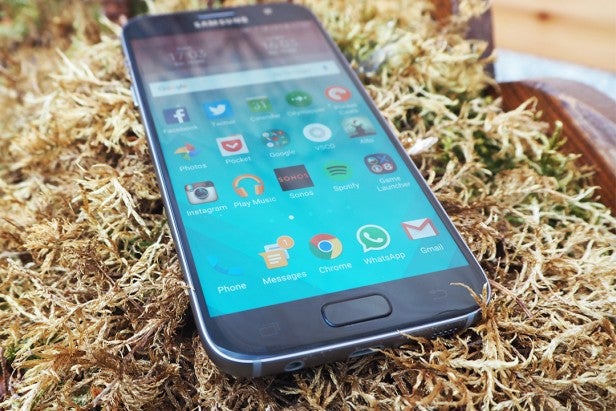
The handsets differ slightly when it comes to the rear of the devices. The OnePlus’ anodised aluminium and antenna lines make it look distinctly HTC One-esque, but the Galaxy S7 is much simpler, with just a Samsung logo and camera lens that now sits flush with the glass body.
The devices are different when it comes to dimensions too: the OnePlus 3 measures 153 x 75 x 7mm, whereas the Galaxy S7 is slightly smaller and thicker at 142 x 70 x 8mm. The reduced form factor of the latter also makes it a lighter handset; the S7 weighs only 152g, while the OnePlus comes in at 158g.
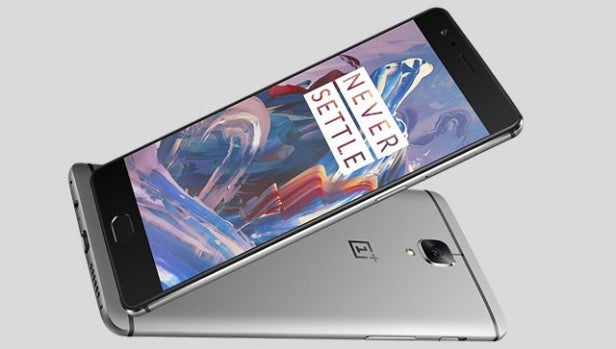
The Samsung Galaxy S7 and the OnePlus 3 are available in various colour options. The S7 is available in Black, Gold, White, Silver or Pink Gold, while the OnePlus comes in either Graphite or Soft Gold.
There’s no doubt that the Galaxy S7 is one of the nicest-looking phones available, with perhaps only the S7 Edge threatening it for design supremacy. In this regard it was going to be difficult for OnePlus to outdo Samsung, and even though the OnePlus 3 is far from being unsightly, it simply can’t match the classy design of the Samsung handset.
OnePlus 3 vs Galaxy S7 – Display
We described the S7’s display as “close to perfection” in our review, and so this is another area in which the OnePlus 3 was likely to struggle to live up to its flagship-killing claims.
The S7 really does have a fantastic screen. The 5.1-inch QHD panel with a 2,560 x 1,440 resolution uses AMOLED technology, rather than the more common LCD. With AMOLED tech, each individual pixel in the panel emits its own light, meaning it can display deeper blacks and more vibrant colours, as well as making it a more energy-efficient screen overall.
The technology is expected to make an appearance on the iPhone 8 when it eventually launches, but today it can be found on the Galaxy S7 – and now, the OnePlus 3.
Related: OLED vs LED LCD

OnePlus has made the transition to AMOLED for its latest offering, then, but it’s only in that regard that its display and that of the S7 match up. The OnePlus comes with a 1080p panel, making for a significantly lower pixel count than Samsung’s handset – 401ppi on the OnePlus as opposed to 577ppi on the Galaxy S7.
In practice, 1080p is perfectly adequate for a phone screen, and it’s unlikely that you’ll notice individual pixels. But considering the OnePlus also has a 5.5-inch screen, as opposed to the 5.1-inch display on the S7, it would have been nice to see the handset come with a QHD resolution – especially if virtual reality is going to figure in the OnePlus’ future.
OnePlus 3 vs Galaxy S7 – Hardware
When you’re talking about a Samsung flagship phone, you’re talking about top-end specifications. The S7 is no exception. Depending on where you buy the phone, it comes with either a Snapdragon 820 or an Exynos 8890 processor – both of which are incredibly powerful chips, capable of running pretty much anything you can throw at them. Combine either with 4GB of RAM and, in short, the Galaxy S7 is very fast.
Of course, the main selling point of the OnePlus phones is that they can match flagship hardware while keeping the price down. With the OnePlus 3, the Chinese firm has managed to match, and even outdo, Samsung while maintaining its commitment to a lower price point.
The handset includes the same Snapdragon 820 chip that can be found in the US versions of the Galaxy S7, and comes with a whopping 6GB of RAM. It also features 64GB of storage as opposed to the Galaxy’s 32GB – although note that, unlike the Galaxy S7, the OnePlus doesn’t allow you to use a microSD card to expand memory. On Samsung’s handset, storage can be upped to 128GB very easily using microSD.
Related: Best Android apps
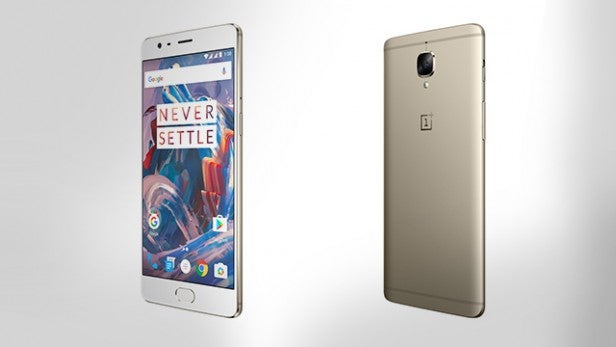
On paper, then, the 64GB OnePlus has a slight edge on the S7 in terms of performance, with its extra 2GB of RAM. It will only be through putting it through its paces in our benchmarking tests that we can confirm just how much of a difference that extra 2GB makes.
In practice, our guess is that it won’t be all that discernible; both devices will offer lightning-fast performance. But it certainly seems that OnePlus has lived up to its promise of flagship specs with the OnePlus 3.
Both handsets are supplied with NFC capability, meaning you’ll be able to use them with Android Pay – a first for OnePlus. Both also feature a 3.5mm headphone jack – something that could potentially become a novelty within a few years.
When it comes to ports, the OnePlus 3 features the same USB Type-C connection as its predecessor – but this time it comes with Dash Charge tech. This technology will enable you to charge the battery to full capacity in only 30 minutes.
Samsung, for its part, decided to stick with a micro-USB port for the S7. This isn’t ideal in terms of future-proofing, but it won’t cause any real issues with general use.
OnePlus 3 vs Galaxy S7 – Software
Both handsets feature Android 6.0 Marshmallow, the difference comes with the separate Android skins that OnePlus and Samsung overlay onto the standard OS.
Historically, Samsung’s TouchWiz has been considered a clunky and unnecessary addition to the perfectly intuitive Android experience. But the company has done good work to try to limit how obtrusive TouchWiz is on the S7. It still looks a tad childish with its overly colourful design, but for the most part it’s been tamed this time around.
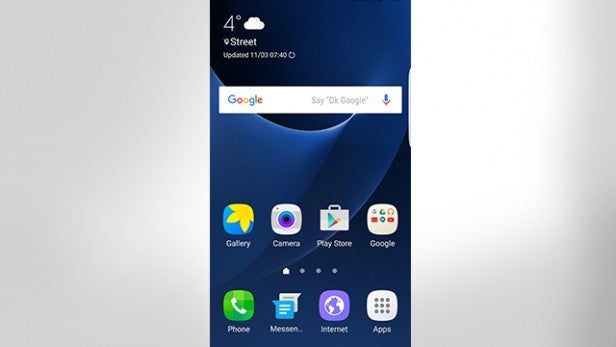
OnePlus’ Android skin is known as Oxygen OS, and in our opinion is actually the better of the two skins. For the most part, OnePlus has left the stock Android experience untouched, adding a few extra functions here and there that improve the experience, rather than detract from it.
It’s likely that, on the whole, the OnePlus 3 will offer a similar user experience to the Samsung Galaxy S7 and since both use Android Marshmallow, they’ll perform well in day-to-day use.
However, we think the OnePlus edges out slightly ahead of the S7. While TouchWiz has certainly improved this year, Oxygen remains far less intrusive and, as such, makes for a better user experience. It also doesn’t come with a load of apps from the company itself, as is the case with the S7 and its Android skin.
Related: Best Android Smartphones
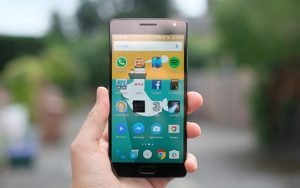 The OnePlus 2 also featured Oxygen OS
The OnePlus 2 also featured Oxygen OS
OnePlus 3 vs Galaxy S7 – Camera
We’ll say right at the start of this section that the Galaxy S7 comes with one of the best phone cameras available, if not the best. The latest handset actually offered a reduction in megapixels compared with the S6, which at first was something of a concern.
However, Samsung has dropped the pixel count from 16 to 12 for a reason. The camera includes much larger pixels – Samsung calls them Dual Pixels. This helps the autofocus lock onto the target faster and more accurately, and for more light to be captured by each pixel.
What’s more, the aperture has been widened to f/1.7, allowing for stellar low-light performance. The camera app is incredibly fast, with a “Pro” mode that offers some genuinely helpful extra options.
Here are some examples of the S7’s shooting capabilities:


Obviously, we’ve yet to try out the OnePlus 3’s camera, and as such it’s difficult to carry out a full comparison. Still, the sensor on the handset outdoes the S7 in terms of megapixels, coming with a 16-megapixel lens. Both the S7 and OnePlus also feature optical image stabilisation, resulting in far sharper shots.
We’ve had these sample shots from OnePlus, released ahead of the phone’s official launch, and they’re impressive enough to have us excited to try the camera out for ourselves:


In terms of front-facing cameras. the S7 comes with a 5-megapixel f/1.7 selfie shooter, while the OnePlus features an 8-megapixel f/2.0 snapper.
Overall, the OnePlus will struggle to match the S7’s pre-eminent phone camera, but the sample shots look promising. We’ll have a full comparison once we get a review model of the OnePlus in for testing.
OnePlus 3 vs Galaxy S7 – Battery
Last year’s OnePlus 2 came with a 3,300mAh battery, which managed to keep the phone going for a day and a half – matching flagship standards. This year’s model comes with a smaller 3,000mAh battery, but its Snapdragon 820 processor offers numerous efficiency-enhancing features, as does Android Marshmallow. In practice, then, we’re hoping for similar battery life from the OnePlus 3.
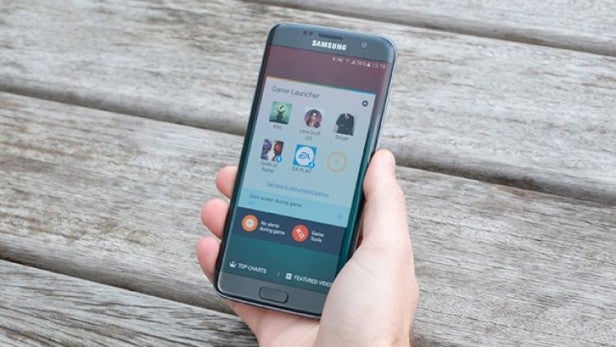
And it’s much the same story when it comes to the S7. Samsung’s handset also comes with a 3,000mAh battery, which will comfortably see it through a day. In short, both the OnePlus and S7 are fairly evenly matched in terms of battery life.
Although the OnePlus 3 features a larger screen, which has the potential to sap more battery than the S7’s 5.1-inch display, the fact that resolution is only 1080p – as opposed to Samsung’s QHD offering – should mean that the difference is negligible.
OnePlus 3 vs Galaxy S7 – Price
This is where OnePlus triumphs over Samsung. The Chinese firm’s handset can be picked up – invite-free this time – for a mere £309. That’s in comparison to the exorbitant £569 of the Galaxy S7.
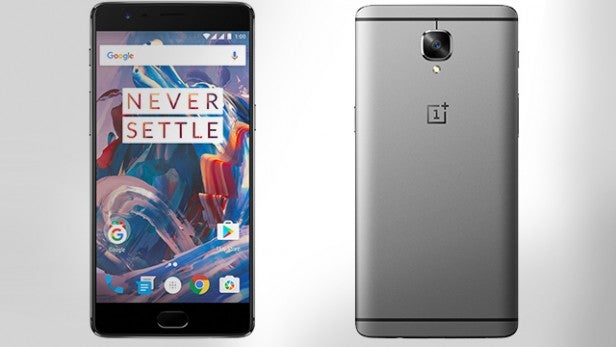
Whichever way you look at it, OnePlus’ commitment to selling phones at cost price makes its handset the clear winner in this category. It’s why the company has managed to become such a notable player in the smartphone market. And when you consider that the internals of both phones are almost identical, it really is impressive that OnePlus can offer its phone at this price.
OnePlus 3 vs Galaxy S7 – Summary
The Samsung Galaxy S7 remains the phone to beat this year. The company’s combination of design mastery, high-end hardware, and unbeatable camera puts it way above most of the competition – although the HTC 10 comes close to matching it.
But the big consideration here is the cost. Not only does the OnePlus 3 match, and in some areas outdo, the Galaxy, it comes at a much lower price.
Related: iPhone 7 – All you need to know
Although we’re yet to get the OnePlus 3 in for a full review, there’s no escaping that incredibly attractive price point. If you want the very best, then the S7 is the way to go. But if you want something that almost matches it for a much lower price, the OnePlus 3 might just be for you.
VIDEO: What’s the no.1 smartphone in the world right now?
Which phone is the winner in your opinion? Let us know in the comments.

